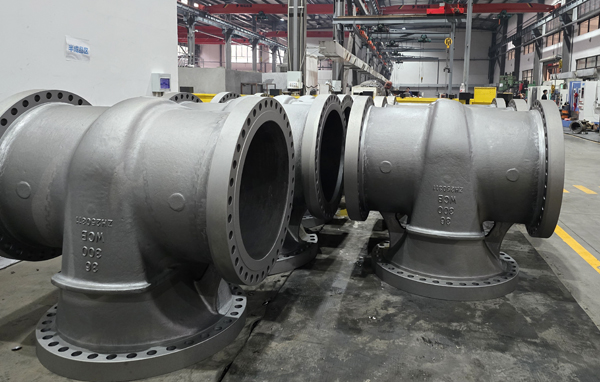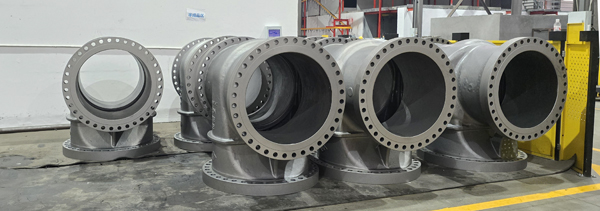The Mighty Flow Controller: Your Complete Guide to 36 Inch Gate Valves
In the world of industrial fluid control, where pipelines resemble superhighways for liquids and gases, 36 Inch Gate Valves stand as critical guardians. These massive valves are engineered for applications demanding high flow capacity, reliable shut-off, and robust performance under extreme conditions. Found in power generation, water treatment, oil & gas transmission, mining, and large-scale chemical processing, selecting the right 36 Gate Valve involves understanding key specifications. This guide dives deep into materials, pressure ratings, connection types, and the landscape of 36 Inch Gate Valve Manufacturers.

Understanding the Scale: Why 36 Inches Matters
The sheer size of a 36 Inch Gate Valve (nominal pipe size – NPS 36, actual outside diameter ~ 914mm) signifies its role in primary transmission lines, main intake/discharge points, and bypass systems for major facilities. Big size Gate Valves like these handle enormous volumes, making their reliability paramount. A failure isn’t just a leak; it can mean significant downtime, environmental risk, and costly repairs. Choosing the correct valve involves careful consideration of several factors.
1. The Backbone: Materials of Construction for 36 Inch Gate Valves
Material selection is fundamental, dictated by the fluid media, temperature, pressure, and environmental conditions (like corrosion potential). Common materials include:
* Carbon Steel (WCB, WCC, LCC): The most prevalent choice for 36 Gate Valves handling water, oil, steam, gas, and general service applications. Offers excellent strength and cost-effectiveness. ASTM A216 grades are standard.
* Stainless Steel (CF8/304, CF8M/316, CF3/304L, CF3M/316L): Essential for corrosive environments, high-purity applications (food, pharma), or elevated temperatures. Type 316/L offers superior chloride resistance. ASTM A351/A743 grades.
* Duplex & Super Duplex Stainless Steel (CD3MN/31803, CD3MWCuN/32750, etc.): Provide exceptional strength (twice that of 316 SS) and outstanding resistance to pitting, crevice corrosion, and stress corrosion cracking (SCC), especially in seawater, chemical, and offshore oil & gas applications. Crucial for demanding Big size Gate Valves.
* Alloy Steels (WC6, WC9, C5, C12): Used for high-temperature and high-pressure steam service (power plants) or specific corrosive services where carbon steel falls short. Often conform to ASTM A217.
* Special Alloys (Monel, Inconel, Hastelloy): Employed for highly specialized, aggressive chemical services or extreme temperatures, though less common at this size due to cost.
* Trim Materials: The internal parts (seat, gate, stem) often require harder or more corrosion-resistant materials than the body. Common trims include 13% Cr, 316 SS, Stellite, Monel, or Inconel overlays/seats depending on service.
2. Containing the Force: Pressure Ratings for 36 Inch Gate Valves
Pressure rating defines the maximum allowable pressure the valve body and internals can safely withstand at a given temperature. For 36 Inch Gate Valves, common pressure classes include:
* ASME Class 150: Suitable for low to moderate pressure applications (e.g., cooling water, low-pressure steam, some process fluids).
* ASME Class 300: A very common rating for 36 Gate Valves in process industries, oil & gas pipelines (mid-stream), and power plants, handling medium pressures.
* ASME Class 600: Used for higher pressure services common in upstream oil & gas production, refining, and high-pressure steam.
* ASME Class 900 & 1500lb: Required for very high-pressure applications, such as wellheads, critical process lines, or high-pressure gas transmission. Valves at these classes and 36 Inch Gate Valve dimensions become significantly heavier and more complex.
Important Note: The actual pressure a 36 Inch Gate Valve can handle decreases as temperature increases. Always refer to the specific valve manufacturer’s pressure-temperature rating charts based on the material.
3. Joining the Line: Connection Types for 36 Inch Gate Valves
Integrating a massive valve requires robust connection methods:
* Flanged Ends (RF, RTJ): The *most common* connection for 36 Inch Gate Valves. Allows for bolting between pipeline flanges, facilitating installation, maintenance, and potential removal.
* Raised Face (RF): Uses a gasket compressed between raised faces. Standard for many applications.
* Ring Type Joint (RTJ): Uses a metal ring gasket seated in machined grooves. Essential for high-pressure and high-temperature services (Class 600 and above, common in oil & gas) as it provides a superior seal.
* Butt Weld Ends (BWE): The valve body ends are beveled to match the pipe and welded directly into the pipeline. This creates a permanent, leak-proof connection ideal for high-integrity, high-pressure, high-temperature, or hazardous fluid services where disassembly is rare. Reduces potential leak points compared to flanges. Common in critical power plant steam lines or subsea applications.
* Other Types (Less Common at 36″): Mechanical joint (MJ) or grooved ends are rarely used at this size due to pressure limitations.
4. Sourcing Giants: 36 Inch Gate Valve Manufacturers and Suppliers
Manufacturing Big Size Gate Valves requires specialized foundries, machining centers, testing facilities, and significant engineering expertise. The market includes:
* Established Global Industrial Valve Giants: Companies like Emerson (Fisher), Flowserve, Velan, KITZ, Bray, NSW Valve, Cameron/ Schlumberger, IMI Critical, Spirax Sarco, and Crane have extensive experience and global reach in producing high-quality
36 Inch Gate Valves. They offer broad material options, pressure ratings, and connection types.
* Specialized Large Valve Manufacturers: Some manufacturers focus specifically on Big size Gate Valves and specialize in bespoke solutions for extreme pressures, temperatures, or corrosive services.
* Regional/National Manufacturers: Many countries have strong regional players capable of producing reliable 36 Inch Gate Valves for standard applications, often offering competitive pricing.
* The Role of Suppliers: 36 Inch Gate Valve Suppliers (distributors, stockists, engineering procurement companies) play a vital role. They aggregate inventory from various 36 Inch Gate Valve Manufacturers, provide local sales/support, offer faster delivery on standard specs, and assist with selection and sourcing specialized valves. Look for suppliers with technical expertise and a strong logistics network capable of handling these massive components.
5. Understanding Investment: 36 Inch Gate Valve Price Factors
The 36 Inch Gate Valve Price is highly variable and depends significantly on:
* Material: Carbon steel is the most economical. Stainless steel commands a premium. Duplex/Super Duplex and exotic alloys are substantially more expensive.
* Pressure Class: Higher pressure ratings (Class 600, 900, 1500, 2500) drastically increase cost due to thicker walls, heavier components, and more complex manufacturing/testing.
* Connection Type: Butt weld valves often have a lower base cost than flanged valves (no flanges/casting), but installation welding costs must be considered. RTJ flanges add cost over RF.
* Trim: Specialized trim materials (Stellite, hard alloys) significantly increase price.
* Manufacturer Brand & Origin: Valves from major global OEMs typically cost more than those from regional manufacturers. Country of manufacture also influences price.
* Quantity & Lead Time: Single valves cost more per unit than bulk orders. Expedited manufacturing adds cost.
* Specifications & Testing: Compliance with stringent specs (API 600, API 6D, NACE MR0175/MR0103) or additional testing (Fugitive Emission testing per ISO 15848, Shell MESC SPE 77/312) increases cost.
* Actuation: Large 36 Gate Valves often require powerful electric, pneumatic, or hydraulic actuators, which can sometimes cost as much as or more than the valve itself.
*As a very rough indication,* expect a basic carbon steel, Class 150, flanged 36 Inch Gate Valve to start in the tens of thousands of US dollars. Prices escalate rapidly with higher pressure, exotic materials, special trims, and actuation, easily reaching hundreds of thousands.

Choosing the Right Partner: Beyond Just the 36 Inch Gate Valve Dimensions
Selecting a 36 Inch Gate Valve is a major capital decision. Beyond just matching the 36 Inch Gate Valve dimensions (face-to-face, flange dimensions per ASME B16.10/B16.5), consider:
* Application Criticality: How vital is absolute reliability and zero leakage?
* Total Cost of Ownership (TCO): Factor in purchase price, installation costs, maintenance requirements, potential downtime costs, and expected lifespan.
* Manufacturer/Supplier Reputation & Support: Proven track record, engineering support, quality certifications (ISO 9001, API Q1), warranty, and after-sales service are crucial.
* Compliance: Ensure the valve meets all relevant industry standards and regulatory requirements.
Conclusion: Mastering Large-Scale Flow Control
The 36 Inch Gate Valve is an engineering marvel designed for the most demanding flow control tasks. Successfully deploying these giants requires a deep understanding of material compatibility, pressure requirements, connection methodology, and the capabilities of different 36 Inch Gate Valve Manufacturers and Suppliers. While the 36 Inch Gate Valve Price represents a significant investment, selecting the optimal valve based on rigorous specifications ensures long-term reliability, safety, and operational efficiency for critical infrastructure handling massive volumes. When dealing with Big size Gate Valves, partnering with experienced engineers and reputable suppliers is not just advisable – it’s essential.
Post time: Jun-03-2025






